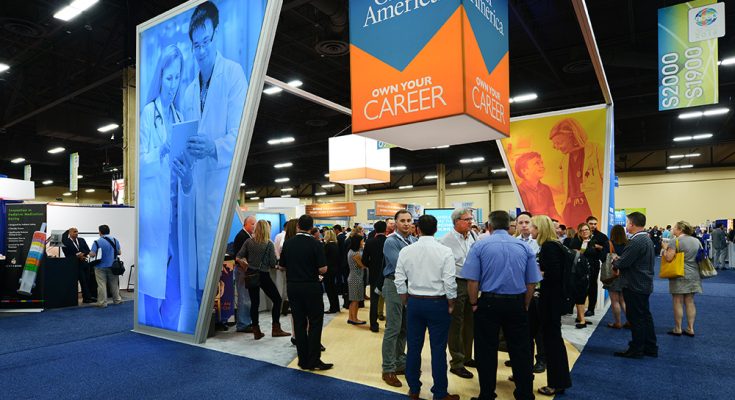When your brand participates in a trade show, you’re not just renting space—you’re investing in a competitive platform to capture attention, engage prospects, and make meaningful business connections. But a winning booth doesn’t happen by accident. It requires a mix of design vision, technical skill, and logistical planning—all of which are brought together by expert exhibit fabricators.
These professionals are the backbone of your exhibit strategy. They take your ideas and turn them into high-impact, physically built environments that perform on the show floor. In this blog, we’ll explore how exhibit fabricators bring your booth concepts to life and why working with a skilled team is essential for trade show success.
What Exactly Do Exhibit Fabricators Do?
While graphic designers and marketing strategists handle the visual and messaging elements, exhibit fabricators are responsible for turning those ideas into tangible structures. They build custom booths, integrate technology, manage materials, and ensure the booth is safe, durable, and easy to transport.
Their role covers a wide range of responsibilities:
- Interpreting 2D/3D designs and converting them into engineered structures
- Selecting construction materials suited for portability and durability
- Incorporating lighting, screens, interactive stations, and signage
- Overseeing logistics for shipping, installation, and dismantling
Ultimately, they ensure that your booth isn’t just beautiful on paper—it performs effectively on the show floor.
From Concept to Completion: The Fabrication Journey
Bringing a trade show booth to life involves a well-coordinated process. Here’s how exhibit fabricators help brands move from abstract ideas to real-world results:
1. Consultation & Discovery
The process starts with understanding your event goals, audience, products, and budget. The fabricators work with your marketing and design teams to determine what kind of booth layout and features will best support your brand’s objectives.
2. Design & Engineering Collaboration
Next, exhibit designers create sketches, 3D renderings, or CAD drawings that lay out the visual and functional elements. Fabricators then assess the design for feasibility, safety, and material use. They may suggest revisions that improve strength, efficiency, or cost-effectiveness.
3. Material Selection & Prototyping
Choosing the right materials is key. From lightweight aluminum frames to sustainable wood and durable plastics, fabricators know which components will withstand the wear and tear of trade show logistics.
They may also create scale models or prototypes of key components for approval before full fabrication begins.
4. Fabrication & Assembly
Once approved, the full build begins. Components are crafted, branded graphics applied, and technology installed. The structure is often assembled at the shop for a test run—ensuring everything fits, functions, and looks exactly as planned.
5. Shipping, Setup & Teardown
Experienced exhibit fabricators also handle on-site services—transporting the booth, assembling it on location, and tearing it down after the event. This ensures your team can focus on engaging with attendees rather than solving booth problems.
Benefits of Working With Expert Exhibit Fabricators
• Improved Brand Perception
First impressions matter. A custom, well-built booth makes your brand appear professional, trustworthy, and worth a visitor’s time. It also shows that you take the event seriously—something buyers and partners appreciate.
• Efficiency and Stress Reduction
Coordinating booth design, logistics, and setup is time-consuming. Hiring a team of professionals reduces pressure on your internal staff and ensures smoother execution from start to finish.
• Creative Problem Solving
Booth spaces often come with size restrictions, awkward layouts, or venue limitations. Experienced fabricators know how to work within those constraints while still creating something eye-catching and functional.
• Adaptability for Future Events
The best booths are built to last. Skilled fabricators design modular or reconfigurable elements so you can repurpose the booth for multiple shows—maximizing your ROI.
Innovation in Fabrication: Staying Ahead of Trends
Top exhibit fabricators keep up with the latest trends in event marketing and experiential design. Some modern additions include:
- LED walls and digital displays
- Sustainable materials and low-energy lighting
- Augmented reality and motion sensors
- Touchscreen product demos
- Portable, tool-free setups for smaller teams
If you’re looking to make a tech-forward impression, partnering with a forward-thinking fabricator is essential.
Final Thoughts
Trade shows are a high-stakes environment. You have seconds to make an impression and minutes to generate interest. Your booth’s design and build can determine whether visitors walk by—or walk in.



